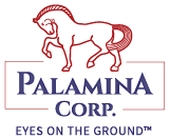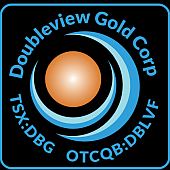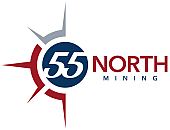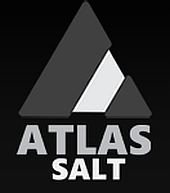 Golden Arrow Resources – Edumine Mining Courses That might be of interest
Golden Arrow Resources – Edumine Mining Courses That might be of interest
Edumine Mining Courses That might be of interest
ADVANCE YOUR CAREER
Edumine is the world’s leading provider of training and education to the mining industry. We offer individuals, corporations and educators effective solutions.
Valuation of Mineral Projects Based on Technical and Financial Modelling – Blended Learning Course
Course Aim and Structure
As a direct result of the impact of COVID-19, Edumine, along with The Imperial College Centre for Continuing Professional Development is launching its well established “Valuation of Mineral Projects Based on Technical and Financial Modelling” as a distance learning initiative covering both technical appraisal and financial evaluation of mineral projects.
Market turbulence significantly affects the mining industry. While the intrinsic value of a mineral project is still a key consideration, understanding the interrelationship between technical and financial risk to truly understand the long term value of an asset, helps companies make better investment (or divestment) decisions. Companies that are able to secure debt finance for both development and acquisition of advanced projects have greater strategic flexibility. Understanding how debt impacts the valuation of projects allows for an objective approach to determining levels of gearing; this is relevant to both the investment banking and mining communities. The Valuation of Mineral Projects course is designed to address these issues.
This course is for professionals with a basic to intermediate understanding of the principles of the accounting cash flow model that wish to gain expertise in quantitative finance in the context of mining. Actual operating mine valuations are a central focus of the course. To gain the most out of the course, attendees should have had some exposure to the technical aspects of minerals and mining.
Attendees are expected to have laptop computers for this course. Workshop sessions are an integral part of the course delivery. Use will be made of the IC-MinEval software, which automates the generation of Excel™-based spreadsheets to produce models for a wide range of mineral projects. These models can be used independently of the software once the course is completed.
Dates: 17 – 21 April, 2023
Duration: 5 half days
Time: 13:00 – 17:00 GMT+1. Check the exact time and date in your city here.
Price: $2999 USD
See below for course policy
Presenter
 Professor Dennis Buchanan
Professor Dennis Buchanan
Professor Buchanan works jointly between the Department of Earth Science and Engineering and the Business School at Imperial College London. His current research interest lies in addressing the underlying technical principles applying to mineral projects and demonstrating how these influence financial modelling. He has almost 40 years’ experience teaching mining geology, mineral exploration and mineral project appraisal and is responsible for the MSc in Metals and Energy Finance. This is a joint degree between the Department of Earth Science and Engineering and the Business School at Imperial College. Professor Buchanan has worked as a Mining Geologist in both gold and platinum mines in South Africa and had wide experience as a consultant to the industry, as an expert witness and in designing and delivering short courses for the industry.
Course Support: James Buchanan
James has an MEng in Chemical Engineering with eight years of professional experience in the minerals industry and he, with close colleagues, have recently started their own company, Zenito.
Course Structure and Delivery
Delegates will be enrolled as a dedicated Team on the Microsoft Teams application where all interactions and course materials will be uploaded. The course will consist of pre-recorded presentations which will be sent to delegates 1 week before the start and during the live sessions recordings will be discussed with tutorials. Delegates will be provided with the suite of PowerPoint slides used and a digital copy of the book ‘Metals and Energy Finance’ will be provided – Please click here to view the book.
Teaching will be delivered over 5 days with each live session starting 13:00 UK time and lasting four hours (20 contact hours in total). The PowerPoint presentations used in the pre-recording video will be loaded onto the “Files” folder on the relevant Team Channel.
Who Should Attend
The course will be of particular interest to mining analysts, fund and asset managers, bankers, engineers responsible for development planning, exploration managers and other specialists in the valuation of mineral projects. It will also be of interest to government officials.
The course will be relevant to entrepreneurs needing to understand the qualifying framework that private equity funds use to evaluate projects.
Pre-Course e-Learning
Prior to the course, registered delegates have access to the online e-learning material consisting of an introductory course titled An Introduction to Modelling Metal Project Finance.
Continuing Professional Development (CPD)
Registered participants who attend the entire short course and complete an evaluation at the end of the course will receive a Certificate of Attendance, confirming the Professional Development Hours (PDH)/Continuing Education Units (CEU) earned. Please confirm with your employer and/or professional association that this course qualifies for CPD.
Cancellations
Notice of cancellation must be given in writing by letter, fax or email and action will be taken to recover, from the delegates or their employers, that portion of the fee owing at the time of cancellation.
A 10% administration fee will be levied for cancellations made 4 or more weeks prior to the first day of the course. Thereafter, the following cancellation refund schedule will apply.
- Cancellation made more than 3 weeks prior to the first day of the short course: 70% of the registration fee is reimbursed.
- Cancellation made more than 2 weeks prior to the first day of the short course: 50% of the registration fee is reimbursed.
- Cancellation made less than 2 weeks prior to the first day of the short course: no reimbursement of registration fees.
Edumine reserves the right to cancel an advertised course on short notice. It will endeavour to provide participants with as much notice as possible, but will not accept liability for costs incurred by participants or their organisations as a result of the course being cancelled or postponed. If a course is cancelled, fees will be refunded in full. Edumine also reserves the right to postpone or make such alterations to the content of a course as may be necessary.
Course Objective
At the end of the course, attendees will:
- Know how to build a financial model using realistic assumptions and inputs such as a rate of production appropriate to the size of the resource, and associated capex and opex costs using CostMine data.
- Understand the circumstances in which it is appropriate to set up models based on a straight discount rate basis vs a model that includes debt (in the latter case the approach to determining the appropriate level of debt will be explained).
- Be able to analyse the financial performance indicators generated by the IC-MinEval software outputs and indicate the valuation that could be placed on the asset based on the output.
- Be able to undertake a sensitivity analysis on key technical and financial variables. Particular attention will be given in the course to why sensitivity on variables such as mining dilution should not be considered.
- Appreciate the role of financial models in identifying those technical variables that have the greatest impact on financial performance and then back-engineering that to the corresponding technical risk.
- Have worked through a variety of case studies that are based on real projects.
This course is characterized by dynamic interaction between presenter and delegates that promotes inter-delegate professional dialogue.
Provisional Schedule
Day 1 – Cash Flow Modelling and Financial Accounting
| Times | Topics |
| 13.00 -14.00 | 1. Introduction.
Principles of DCF Modelling. Discount rate. Net Present Value. Internal Rate of Return. Payback Period and Choice of Discount Rate. Impact of different discount rates over time. Cash flow for a mineral project. Scenarios illustrating the range of economic performance indicators. Case history of gold operation. Setting up base case. Nominal versus real. |
| 14.00 – 15.00 | 2. Valuation of Companies
Terminology. Share performance metrics. Alternative methods – DCF, comparable transactions and appraised value method. Treatment of sunk capital. Acquisition cost. Accounting impairment. |
| 15.00 – 16.00 | 3. Analysis of Risk and Uncertainty – Workshop Session
DCF exercise based on annuity tables. Review of spreadsheet-based solution. |
| 16.00 – 17.00 | 4. Analysis of Risk and Uncertainty
Sensitivity analysis. Application to Monte Carlo simulation techniques. Treatment of multivariant systems. Brownian motion and probabilistic modelling. Crystal Ball modelling of gold project. Precision versus accuracy. |
Day 2 – Cash Flow Modelling and Financial Accounting. Strategic Management and Resource Evaluation
| Times | Topics |
| 13.00 -14.00 | 5. Project Finance and the Cost of Equity
Weighted average cost of capital (WACC). Integrated economic and accounting model for a simple gold project demonstrating the interrelationship between DCFs and the financial accounts. Capital asset pricing model. Optimisation of gearing. Project Finance cover ratios |
| 14.00 – 15.00 | 6. Demonstration of IC-MinEval.
Treatment in the financial model of profits after tax before interest (ATBI), profit before interest and tax (PBIT), profit after interest before tax (PAIBT) (and profit after interest and tax (PAIT). |
| Strategic Management and Resource Evaluation | |
| 15.00 – 16.00 | 7. Value Creation in Mineral Projects
The cycle of value creation in mineral projects. Exploration Stage. The pyramid reflecting the evolution of a gold mineral exploration and evaluation programme. Drivers – Commodity Prices. Resource Base and Asset Life – Mineral Resources. Synergies and Portfolio Optimisation. Single project mining company stages of development and funding options. Funding Options for Mineral Projects – Pre-Initial Public Offering, Listing, Joint Venture Agreement and Project Finance. Multiple-partner modelling. |
| 16.00 – 17.00 | 8. Resource Evaluation
Sampling. Diamond drill rig, crowns, core and core storage. Process Mineralogy. Concepts around Geological Continuity. Polygons of Influence and Inverse Distance. |
Day 3 – Resource Evaluation and Project Evaluation
| Times | Topics |
| 13.00 -14.00 | 9. Resource Evaluation
Geostatistical Methods Experimental semi-variogram. Variogram showing the relationship ỵ(h) which relates the semi-variance of sample differences to distance between samples. Resource block model. Grade-tonnage relationships. Reserve and Resource Definitions. Drill spacing. Evaluation versus Production. Break-even and cut-off grade. |
| 14.00 – 15.00 | 10. Metals & Energy Project Appraisal & Finance
Nomenclature of documentation generated in mineral project development. IPO Prospectus, SEDAR and NI 43-101.Preliminary Feasibility Study (PFS) – Elements and Characteristics. Cost Estimation. Relationship Cost to Capacity. Asset Optimisation. Full Technical Feasibility Study (FTFS)– Elements and Characteristics. Engineering Design Stages . Feasibility Studies and the Information Memorandum. Construction. Construction Monitoring. Production Monitoring. Project Finance Parameters. |
| 15.00 – 16.00 | 11. Quantitative Finance and Financial Engineering
Decision tree at pre-feasibility stage after NPV optimisation. Real Option Valuation. Tax and Company Structure. Mineral taxation regimes. Gearing Optimisation. |
| 16.00 – 17.00 | 12 Case History – Base Metals.
Open pit nickel mine. Sample of DCF model worksheet. Annual cover ratios. Scenario analysis. Optimisation of gearing. Cost estimates. Different stakeholders. Reserve tail. Convergence of technical and financial risk |
Day 4 – Project Evaluation
| Times | Topics |
| 13.00 -14.00 | 13. Case History – Iron Ore
Iron ore minerals – Hematite and Magnetite. Magnetite and ilmenite. Magnetite, vanadium and ilmenite. Mine blocks. Product specifications. Product specifications. Yield optimisation curve. Infrastructure. |
| 14.00 – 15.00 | 14. Case History – Diamonds.
Geological settings and pricing. Alluvial deposit case history. Evaluation of projects. Instability of DCF models. Primary kimberlitic projects |
| 15.00 – 16.00 | 15. Transition from open pit to underground.
Shaft sinking. Production ramp-up and profile in the transition from surface to underground mining. As the pen-pit matures, the number of working faces becomes limited so production drops and this needs to be compensated for in the ramp-up of block caving. Copper projects case histories – Palabora, Chuquicamata and Oyu Tolgoi |
| 16.00 – 17.00 | 16. Share Structures
Deal structure, Share price and stakeholder valuations associated with the progression from a private placement to undertake exploration through to an Initial public offering to fund evaluation drilling. Treatment of options purchased for below an issue price and then distribution of shares held by stakeholders when exercised if this is below an IPO price. Consideration of monies added to the company treasury during corresponding funding stages. Spreadsheet-based workshop session. |
Day 5 – Project Evaluation
| Times | Topics |
| 13.00 -14.00 | 17. Constraints on Mineral Resource Development
ESG – Environmental impact, social license and corporate governance. Environmental impact assessment. Sustainable Development and the Moral Case for Mining. Occupational Health and Safety. Cost of Environmental Compliance and Closure Provision. Site Visits and Due Diligence |
| 14.00 – 15.00 | 18. Net Smelter Returns
Off-take agreements and toll smelting. Treatment Charge, Refinery Charge (TC/RC) and Price Participation (PP). Case histories. Gold project. Lead, zinc silver project |
| 15.00 – 16.00 | 19. Andean Skarn Silver, Lead Zinc
Workshop session. Valuation of a 22 Mt silver-rich deposit with associated Zn and Pb mineralisation. Determination of the cost of equity as a function of the change in gearing. Optimisation of NPV. |
| 16.00 – 17.00 | 20. Metals streaming
Comparison between Different Sources of Funding for the Development of a Mining Project. Case History -Aljustrel copper-zinc-lead-silver in Portugal. Metals Streaming Companies |
Fees
The fee covers the lecture, access to pre-course e-learning, access to IC-Mineval software, digital copy of Metals and Energy Finance book, and a certificate of completion.
https://goldenarrowresources.com/
































